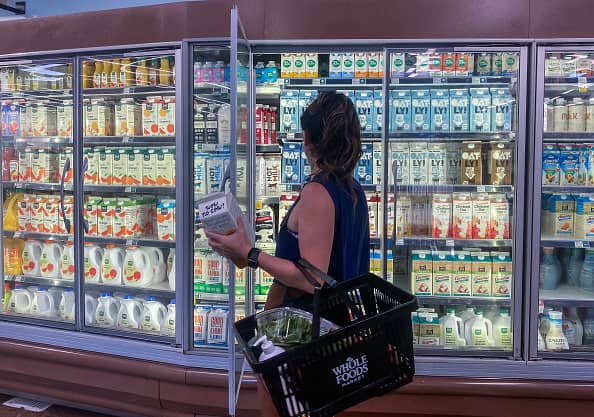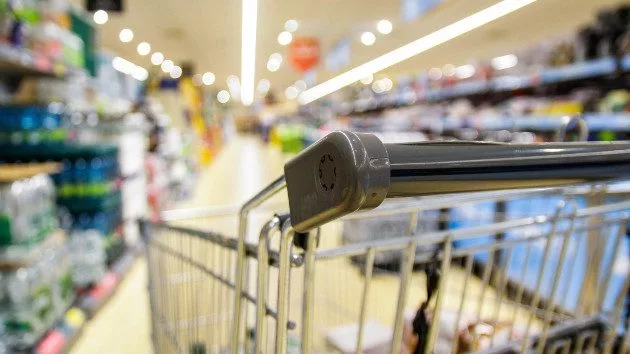
(WASHINGTON) — Americans may be getting some relief at the gas pump, but they are not finding that relief at the grocery store.
Gasoline prices nationwide are down 10.6% from their record high of $5 a gallon in June. According to the American Automobile Association, the national average is now $3.70 for a gallon of regular, but food prices continue to soar.
The August Consumer Price Index found inflation rose 8.3%, down slightly from July’s reading of 8.5%, but still near a 40-year high. Those falling gas prices were more than offset by higher prices for rent, food, healthcare, and electricity.
The Federal Reserve’s series of interest rate hikes designed to beat back high inflation has had little impact on food prices. Economists say that is because a number of factors influence the cost of food, including the geopolitical landscape and weather.
The war in Ukraine has sent prices of wheat and other commodities higher while severe floods and droughts in parts of the U.S. have impacted crops and food supply. An outbreak of the avian bird flu is also wreaking havoc on the U.S. chicken and turkey population, triggering a spike in egg prices and analysts are already warning that turkey for this year’s Thanksgiving dinner will be the most expensive yet.
Unlike discretionary spending on things like clothing and entertainment, demand for food is not flexible, and consumers are feeling the pinch down nearly every aisle of the supermarket. Overall, the cost of food is up 11.4% in the past year, that’s the highest annual increase in 23 years, according to the U.S. Bureau of Labor Statistics. Prices for groceries shot up 13.5% over the past year, while eating out is 8% more expensive, as restaurants hike prices to pay for their own rising food costs.
Sticker shock has hit some items worse than others. The price of eggs is up 39.8%, milk prices have risen 17%, while bread is up 16.2% from a year ago, according to the U.S. Bureau of Labor Statistics. Fruits and vegetables combined cost 9.4% more than they did a year ago, while meat is up 6.7% and chicken costs 16.6% more.
Fresh data shows skyrocketing food prices are starting to change consumer’s buying habits at the supermarket. Sales of frozen dinners and entrees fell 11.4% in August, while sales of cookies fell 8.9% and sales of frozen juices and drinks slid 8%, according to the data analytics and research firm IRi.
Experts say there are strategies you can implement to help you make money-saving decisions on your next trip to the grocery store.
First, plan your meals for the week and take inventory of your refrigerator and pantry so you know exactly what you need. Once you know what you need, make a list and stick to it. Experts say going to the grocery store without a plan leaves you open to impulse purchases, which could lead to poor money decisions.
Avoid those pricier pre-packaged lunches and dinners, as well as pre-cut vegetables and fruits. They may be a time-saver, but experts agree the higher cost for convenience can quickly drain your wallet. Whenever possible, buy store-brand products. They are nearly always cheaper than name brands, and in many cases, you won’t be sacrificing quality. According to Consumer Reports, 22% of shoppers choose which supermarkets to shop at based partly on the quality of their store brands.
You can also clip digital or paper coupons and join your store’s loyalty program where you can start taking advantage of store discounts immediately.
Perhaps the number one money-saving tip – never food shop when you’re hungry. It’s sure to be a budget buster.
Copyright © 2022, ABC Audio. All rights reserved.








